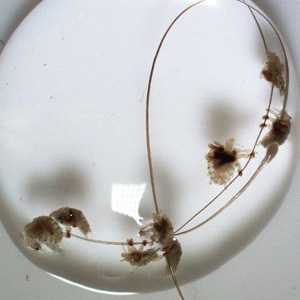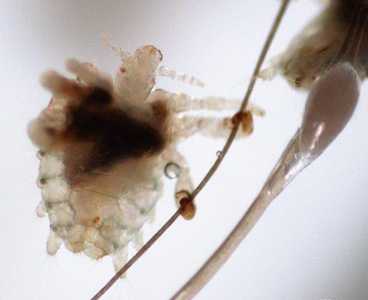
Case #408 - November 2015
A 65-year-old man from rural Canada presented with pruritus on his chest; he mentioned that even with frequent bathing the symptoms persisted. Possible arthropod ectoparasites were observed on his chest hair (Figure A) and a specimen was collected and sent to the Microbiology lab for examination. Figure B shows a close-up of one of the organisms observed by the attending microbiologist. The object measured 1.5 mm in length. What is your diagnosis? Based on what criteria?

Figure A

Figure B
Case Answer
This was a case of phthiriasis caused by the human pubic louse, Pthirus pubis. Diagnostic features included:
- lice with a body nearly as wide as long (Figure B), consisting of six legs, one pair of eyes, and one pair of antennae.
- raptorial (adapted for grasping) tarsal claws on the meso- (middle) and metathoracic (hind) legs that are larger than those on the forelegs (Figure B).
- protuberances along the lateral margins of the abdominal segments (Figure B).
- a nit (egg; arrow, Figure B) with a conical operculum.
While the chest is not a typical location for this species, P. pubis can be found on nearly any coarse hair on the body, including eye brows and eye lashes, and male facial hair.

More on: pthiriasis
This case and images were kindly provided by the Cadham Provincial Public Health Laboratory, Winnipeg, Manitoba, Canada.
DPDx is an education resource designed for health professionals and laboratory scientists. For an overview including prevention and control visit www.cdc.gov/parasites/.
- Page last reviewed: August 24, 2016
- Page last updated: August 24, 2016
- Content source:
- Global Health – Division of Parasitic Diseases and Malaria
- Notice: Linking to a non-federal site does not constitute an endorsement by HHS, CDC or any of its employees of the sponsors or the information and products presented on the site.
- Maintained By:


 ShareCompartir
ShareCompartir